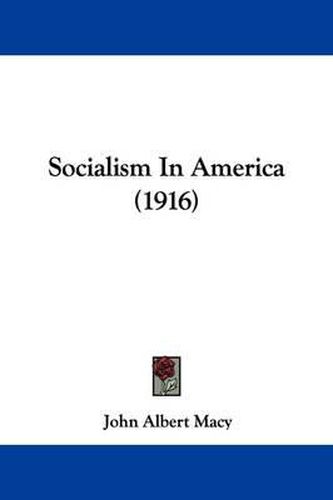Readings Newsletter
Become a Readings Member to make your shopping experience even easier.
Sign in or sign up for free!
You’re not far away from qualifying for FREE standard shipping within Australia
You’ve qualified for FREE standard shipping within Australia
The cart is loading…






Purchase of this book includes free trial access to www.million-books.com where you can read more than a million books for free. This is an OCR edition with typos. Excerpt from book: CHAPTER III ECONOMIC CLASSES Since the beginning of history the world has been owned and mastered by a minority. There are instances of communism, but though they are instructive in showing, if nothing more, that man can own communistically, they belong to primitive stages of society or are nai-ve experiments within advanced society. In the great epochs of history emperors, oligarchies, military and commercial castes and landlords have been the proprietors of the earth. To-day the world is largely owned and managed by capitalists. The modern state, its government, its industries, its educational and religious institutions can be comprehended under the term capitalism. Before capitalism the European world was feudal. Early in the Middle Ages it became partly capitalistic. To-day it is partly feu- dalistic, witness czars, kaisers, dukes, popes, archbishops. No condition of society breaks off with sharp cleavage from another. Therevolution from feudalism to capitalism occupied centuries of time. The basis of feudalism was the ownership of land and the system of tenure. Princelings of various magnitude possessed territories and the people thereon were vassals to the lord. They tilled soil that they did not own, fished in streams that they did not own, put to sea in ships that they did not own, guarded a castle that they did not own and went at the behest of their master upon marauding expeditions into neighboring domains. Tillage and pillage tell half the story of the Middle Ages. The lords were loosely federated for mutual protection and for the same reason dependent on greater lords up to the king. Three or four classes of people were in some degree free from bondage to the land and its local owner. Among the relatively free classes were the professional soldiers, mercen…
$9.00 standard shipping within Australia
FREE standard shipping within Australia for orders over $100.00
Express & International shipping calculated at checkout
Purchase of this book includes free trial access to www.million-books.com where you can read more than a million books for free. This is an OCR edition with typos. Excerpt from book: CHAPTER III ECONOMIC CLASSES Since the beginning of history the world has been owned and mastered by a minority. There are instances of communism, but though they are instructive in showing, if nothing more, that man can own communistically, they belong to primitive stages of society or are nai-ve experiments within advanced society. In the great epochs of history emperors, oligarchies, military and commercial castes and landlords have been the proprietors of the earth. To-day the world is largely owned and managed by capitalists. The modern state, its government, its industries, its educational and religious institutions can be comprehended under the term capitalism. Before capitalism the European world was feudal. Early in the Middle Ages it became partly capitalistic. To-day it is partly feu- dalistic, witness czars, kaisers, dukes, popes, archbishops. No condition of society breaks off with sharp cleavage from another. Therevolution from feudalism to capitalism occupied centuries of time. The basis of feudalism was the ownership of land and the system of tenure. Princelings of various magnitude possessed territories and the people thereon were vassals to the lord. They tilled soil that they did not own, fished in streams that they did not own, put to sea in ships that they did not own, guarded a castle that they did not own and went at the behest of their master upon marauding expeditions into neighboring domains. Tillage and pillage tell half the story of the Middle Ages. The lords were loosely federated for mutual protection and for the same reason dependent on greater lords up to the king. Three or four classes of people were in some degree free from bondage to the land and its local owner. Among the relatively free classes were the professional soldiers, mercen…